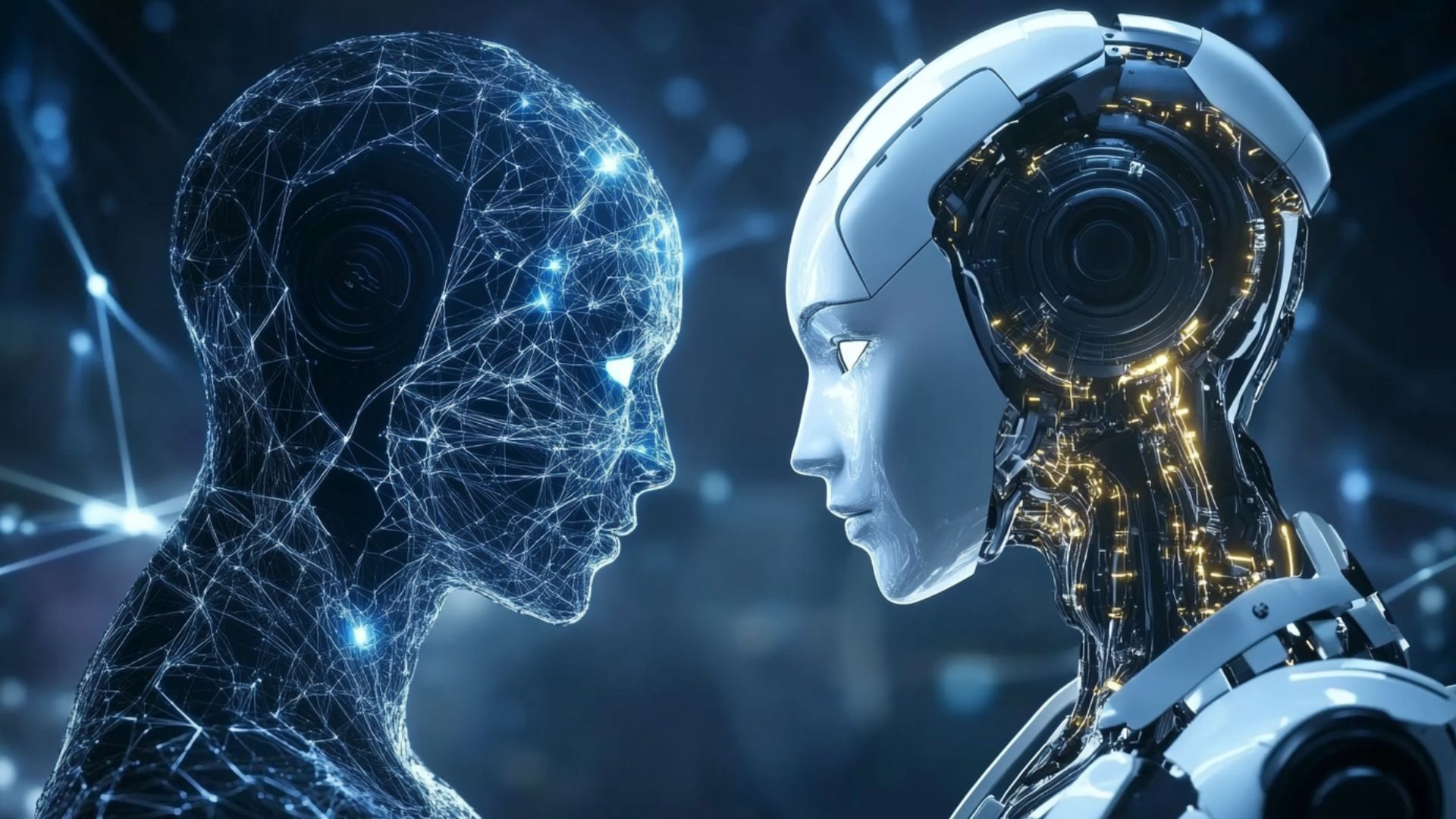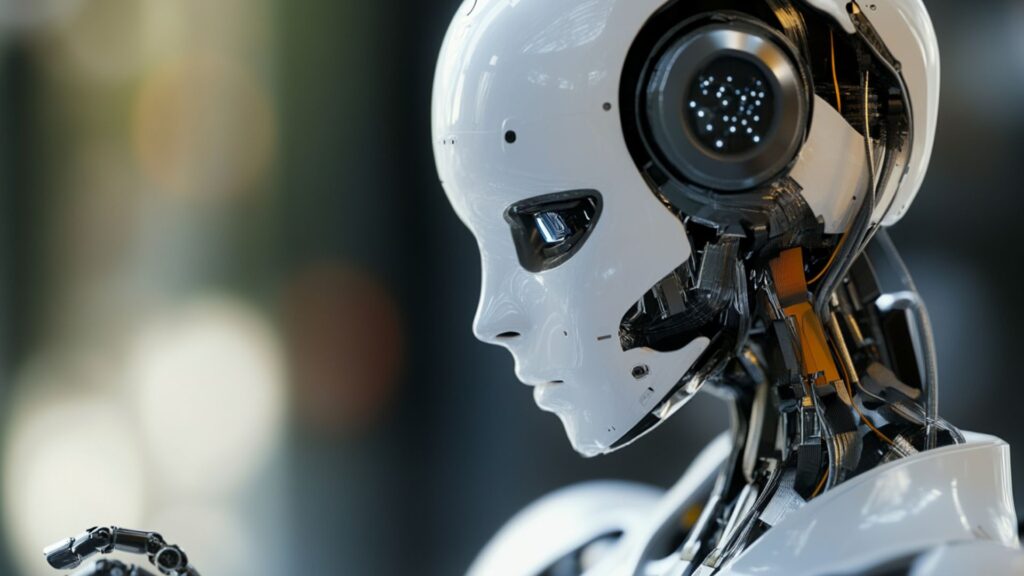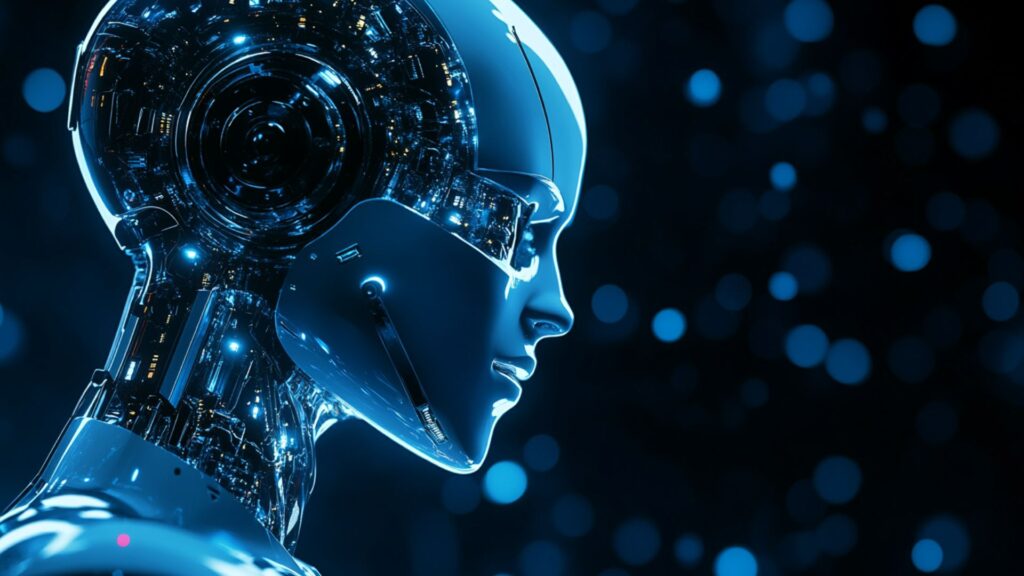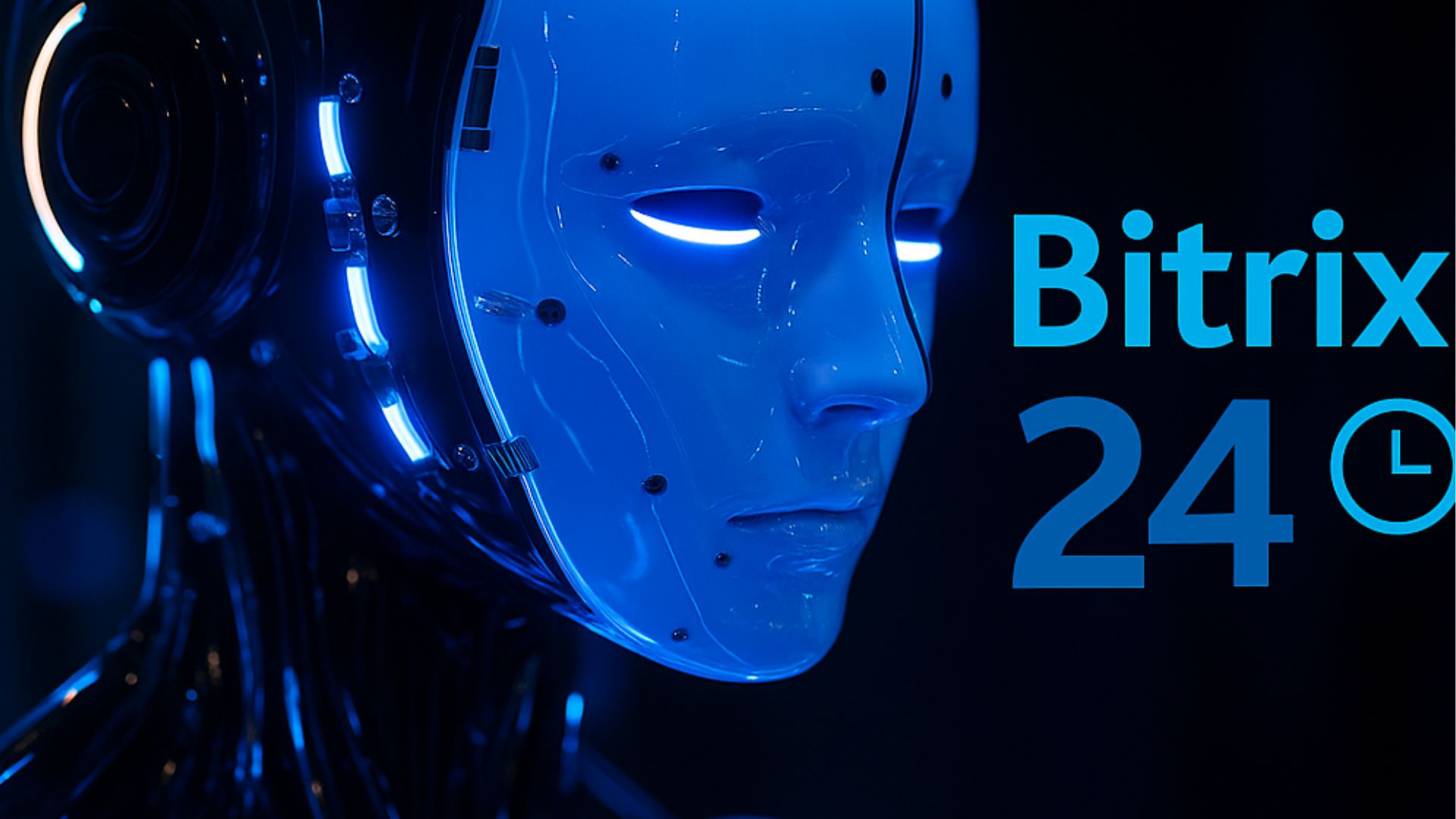Generative AI vs. Predictive AI

High-level work requires technological progress to succeed. Most companies and individuals now use artificial intelligence in their daily operations. These technologies help people adapt better to modern life and provide significant benefits. The main advantages include optimizing routine tasks and expanding business strategies. Consumers increasingly rely on AI for personal needs, with smart home technologies creating comfort and saving time.
Using both generative AI and predictive AI offers excellent solutions for modern businesses. The question of generative AI vs predictive AI remains relevant today - which approach works better? Today, generative AI plays an integral role in creating images, text, and video content. Generative AI models human language patterns and improves customer communication systems. AI encompasses design generation capabilities and chatbot functionality with structured implementations helping organizations achieve success.
Predictive AI focuses on continuous analysis of historical data and past events to build effective strategies. Predictive AI is used across many important industries and sectors to enhance user experiences. Understanding the differences between gen AI and predictive AI will help clarify their unique advantages and applications.
Understanding the Core Concepts of Generative and Predictive AI
Artificial intelligence plays a vital role across numerous industries and applications. Modern AI divides into several distinct types, each offering universal benefits and unique advantages. Understanding these main characteristics helps clarify how different AI systems operate. High-quality AI tools help optimize workflows and improve customer communication. Companies achieve higher competency levels and attract new customers through strategic AI implementation.
Predictive Artificial Intelligence. The question "What is predictive AI?" remains highly relevant in today's business landscape. This AI type uses specialized systems that predict future events based on historical data and past interactions. These systems make behavior predictions that help businesses forecast sales trends and market developments. Predictive AI serves as a powerful tool for preventing unexpected events and managing risks.
Companies deploy recommendation systems based on past user preferences and behavioral patterns. Predictive AI utilizes technologies like classification algorithms, machine learning models, and advanced analytics systems. Analyzing financial reports and user behavior directly impacts company productivity and performance. Typical applications include inventory management, medical diagnostics, and economic forecasting across various industries.
Generative Artificial Intelligence. Understanding generative vs predictive AI requires examining their fundamental differences. Generative AI represents an important system for complex decision-making processes in modern businesses. These systems generate new content and information through continuous learning from large datasets. Training occurs using vast amounts of previously established data to improve accuracy.
A prime example includes ChatGPT models that create human-like text content. Generative AI encompasses creating images, videos, music, and other creative content types. This technology uses large language models, deep learning algorithms, and sophisticated neural networks. Without these core technologies, high-quality AI performance becomes impossible to achieve. Companies explore how these systems provide creative solutions to specific business challenges. Generative AI powers virtual assistants, personalized user experiences, and creative content generation.
What is Generative AI?
Understanding different AI types helps businesses recognize the benefits of each technology approach. Generative AI is currently used across many industries and business sectors. This technology helps companies productively create new content and attract potential customers. Generative AI analyzes large amounts of data to identify patterns and generate outputs.
Learning from past interactions helps create more effective and engaging content. Unlike conventional systems, generative AI uses larger datasets for training and optimization. AI can predict analytics, generate written content, and create images and music. Generative AI uses deep learning principles based on neural network architectures.
Neural networks help improve work optimization and pattern recognition in complex datasets. These networks enable AI to recognize data patterns and generate new content. Here are prominent examples of generative AI applications:
- Text Generation. GPT technology enables the creation of comprehensive articles and written content. This approach helps companies produce engaging, high-quality content for marketing and communication.
- Image Synthesis. Generative AI uses advanced models to create realistic images from text descriptions. DALL-E serves as a prime example, creating unique and meaningful visual content.
- Creative Content. Content creation represents another key mission of generative AI systems. This technology helps create music, realistic voice synthesis, and speech generation. The gaming industry uses generative AI for 3D modeling and interactive content creation.
What is Predictive AI?
Predictive AI definition offers practical and valuable applications for many business organizations. This AI type focuses primarily on analyzing historical data to make accurate predictions. Analyzing past interactions helps improve forecasting accuracy and operational efficiency. Companies analyze data to predict future events, trends, and customer behavior patterns.
The right analytical approach helps achieve excellent results and optimize business strategies. Predictive AI's main goal involves studying data models and building effective strategies. Using quality analytical tools provides a reliable way to improve business performance and maintain brand reputation.
Predictive AI definition finds applications in critical areas including medicine, finance, and marketing. Understanding predictive AI helps clarify how this technology analyzes historical data patterns. Based on data analysis, AI creates predictions for future trends and developments. AI studies customer behavior, preferences, and emerging market trends through advanced algorithms.
Algorithms help identify and generate unique patterns from complex datasets. Forecasting represents an integral part of successful predictive AI implementation. These systems use sophisticated algorithms to improve prediction accuracy and business outcomes. Here are the main types of predictive AI models:
- Regression Models. These models predict numerical values for business planning and optimization. Companies use predictive AI to enhance financial performance and increase revenue streams. AI predicts revenues using linear regression analysis and various price trend models.
- Classification Models. Classification models categorize specific objects and monitor their characteristics. These models detect fraud and prevent security problems before they occur. In healthcare, classification models help diagnose serious diseases and medical conditions. Financial institutions use models to assess credit risk and minimize potential losses.
- Time Series Models. These predictive AI models analyze data patterns over extended time periods. Companies use time series models to identify traffic patterns and customer demand fluctuations. For effective sales optimization, businesses study the number of interested users and conversion rates.
Key Use Cases in Business and Technology

Organizations use both AI types to solve different business challenges and operational problems. Generative and predictive AI texts serve as essential tools in modern business environments. Each type has specific tasks and roles across various industries and applications. These applications focus on improving business performance and attracting new customers.
Generative AI Applications:
- Content Marketing. Generative AI powers SEO strategies and content marketing for business success. AI automatically creates articles with engaging content and valuable information for target audiences. Companies develop product descriptions and blog posts according to their brand guidelines. AI generates text while incorporating essential keywords and phrases for search optimization.
- Chatbots. AI-powered chatbots provide continuous customer communication and support services. 24/7 chatbot operation allows businesses to deliver personalized customer experiences consistently. Customers receive high-quality service and support from automated systems.
- Design and Creative Content. Generative AI excels at creating graphic designs and advertising creatives. AI generates images based on text descriptions while following company brand guidelines.
- Rapid Prototyping. AI enables quick creation of various prototypes for company products. AI can generate 3D models and mockups for marketing materials and business presentations.
- Training Content. Generative vs predictive AI creates specialized training content for employee onboarding and development. Virtual instructors operate on AI foundations to provide educational experiences.
Predictive AI Applications:
- Demand Forecasting. Predictive AI excels at determining future trends and sales volume predictions. AI systems handle supply planning, production scheduling, and inventory management communications.
- Finance and Risk Management. Predictive AI provides powerful financial modeling and risk assessment capabilities. AI performs credit evaluations and detects fraudulent activities across financial transactions. Companies use predictive AI to explore potential risks and forecast cash flow patterns.
- Personalized Experiences. Based on historical data, AI systems offer relevant experiences to customers. Experience personalization includes recommendation systems and user behavior prediction models.
- Healthcare Applications. Predictive AI tools forecast various diseases and potential medical relapses. Doctors can prescribe effective treatments through personalized medicine and reliable data analysis.
- Equipment Maintenance. Predictive AI forecasts system failures and equipment breakdowns before they occur. Employees can address issues proactively and reduce operational repair costs significantly.
Applications of Generative AI in the Enterprise
Generative AI finds widespread use in enterprises to improve operational efficiency. In corporate environments, generative AI plays a crucial role in productivity enhancement. AI increases productivity while reducing time required for various routine tasks. Workers can focus on essential activities while AI handles repetitive processes.
- AI-Based Design. Companies use generative AI for improved visual design and brand development. AI-based systems create logos, brand designs, and marketing materials efficiently. AI generates illustrations, content, and images for company presentations and marketing campaigns.
- Automated Content Generation. The difference between predictive and generative AI lies in different works. Generative AI creates texts, articles, and product descriptions automatically. AI customizes technical reports and handles internal documentation requirements across departments.
- Conversational Agents. Conversational agents help improve business strategies and customer engagement. Personalized experiences and satisfied customers represent top priorities for successful companies. Chatbots and virtual assistants provide 24/7 customer support and communication services. Customers receive support, reliable communication, and answers to their questions consistently.
- Code Generation. Gen AI vs predictive AI can write code and automate software development processes. Special tools help improve software development workflows and reduce development time. AI handles automatic testing, query generation, and technical documentation creation.
Predictive AI Driving Business Decisions
Business decisions benefit significantly from predictive AI insights and analytical capabilities. Strategic decisions require accurate data analysis and cutting-edge technological solutions. Predictive AI transforms business processes in modern work environments. This technology helps make decisions that are accurate, proactive, and well-informed.
- Customer Churn Prediction. Predictive AI identifies customers likely to discontinue services or products. Companies use this technology to track customer retention rates and satisfaction levels. By predicting customer churn, businesses make informed retention decisions and strategies. Companies can retain existing customers while attracting new ones through targeted approaches.
- Demand Forecasting. Predictive AI makes significant contributions to production demand forecasting and planning. AI manages purchasing decisions, logistics operations, and supply chain management. Workers understand inventory requirements and can minimize operational costs effectively.
- Fraud Detection. Fraud detection represents a critical application of predictive AI technology. AI investigates suspicious activities and monitors financial transactions in real-time. Financial companies avoid serious security problems through predictive AI fraud detection systems. Predictive AI tools help organizations make informed security decisions quickly.
- Credit Scoring. Predictive AI evaluates customer creditworthiness and financial stability accurately. Financial business tools allow companies to build sustainable lending practices. Organizations make informed decisions regarding credit approval and risk management.
Comparing Strengths, Limitations, and Ethical Challenges
Understanding generative AI vs predictive AI vs machine learning helps companies choose appropriate tools. Generative AI represents a machine learning subset focused on creating new content. Predictive AI concentrates on future predictions and data analytics applications. Machine learning uses algorithms to learn patterns and improve decision-making processes. Examining advantages and disadvantages helps companies select the right technological solutions.
Generative AI:
- Strengths. Generative AI enables creativity and flexibility in business operations and content creation. The technology focuses on automating creative processes while providing scalability for growing businesses. Creativity and flexibility represent key advantages for creating visual content and written materials.
- Limitations. Pedictive vs generative AI can produce inaccurate data and lacks contextual awareness in outputs. It requires precise algorithms and query configurations to achieve desired results consistently.
- Ethical Challenges. Companies often face misinformation and plagiarism concerns with generated content. Generative AI can potentially infringe copyrights and create misleading information or propaganda. Constant monitoring and oversight remain essential for maintaining work effectiveness and ethical standards.
Predictive AI:
- Strengths. Predictive AI provides clear forecasts relevant to company operations and strategic planning. Organizations can rely on financial reporting accuracy and make informed financial decisions. Analytics-driven work achieves high accuracy with proper decision-making processes and data analysis.
- Limitations. Gen AI vs machine learning systems face certain constraints when analyzing historical data exclusively. Poor data quality can make accurate forecasting impossible and limit prediction reliability. Limited adaptability to new trends and patterns represents another significant disadvantage.
- Ethical Challenges. Ethical concerns include potential discrimination and unfairness in algorithmic decision-making processes. Transparency can become questionable due to privacy violations and data handling practices. Using personal data without proper consent leads to serious legal mistakes.
Integration of Generative and Predictive AI in Hybrid Systems

Integrating generative AI and predictive AI creates powerful solutions for modern business operations with machine learning. These hybrid systems open new efficiency levels for many companies and organizations. Smoothness, monitoring capabilities, clarity, and structure represent main advantages for businesses. Companies can maintain brand consistency while optimizing all work processes effectively. The most important benefit involves delivering personalized experiences for customers consistently.
One significant advantage includes anticipating customer needs and responding quickly to market changes. Predictive models identify emerging trends that appeal to target audiences. Generative AI creates personalized advertisements with strong visual appeal and engagement. Combining both types of AI generative vs predictive AI helps configure business operations properly and efficiently.
Users receive customized experiences that prove extremely valuable for company success. An excellent example includes software that predicts user actions through predictive AI analysis. Generative AI then creates code and increases work efficiency across development teams. Integration proves critical in healthcare for researching diseases and creating treatment plans. Combining both technologies significantly impacts company operations and customer experience quality.
The Future Outlook: Which AI Will Shape Tomorrow's Innovation?
Artificial intelligence holds tremendous promise for future business development and innovation. AI will shape new innovations while improving business strategies across all industries. Understanding AI vs predictive analytics helps companies recognize tool effectiveness and applications. Both approaches offer different methods for accomplishing business objectives successfully.
In 2025, generative AI will serve as a powerful tool for creating new content. Companies rely on generative AI across many sectors for achieving business success. Creating code, designs, music, and graphics remains essential for competitive advantage. Generative AI improves work through strategic approaches to problem-solving and content creation. This technology will become more sophisticated in contextual understanding and personalization capabilities.
Predictive AI continues evolving as a powerful tool across multiple industries and applications. AI enables improvements in finance, logistics, and operational efficiency areas. Researching potential errors and security threats helps companies avoid failures proactively. Predictive AI represents significant healthcare improvements through disease research and diagnosis capabilities. Disease detection and treatment optimization remain primary benefits of predictive AI technology.
Both generative AI vs predictive AI will help optimize business operations significantly. Route optimization, minimizing delays, and content creation represent the most important applications. For companies, understanding differences between generative AI and predictive AI provides competitive advantages. However, combining both types will merge predictive capabilities with creative content generation. Personalized customer interactions will improve dramatically with hybrid AI systems.
24/7 support will help provide necessary answers while attracting more customer attention. The growing trend toward AI adoption remains significant for business organizations worldwide. Companies continue improving technologies to reduce bias while increasing transparency and accountability. Collaboration between humans and AI remains crucial for accuracy and reliable predictions.


